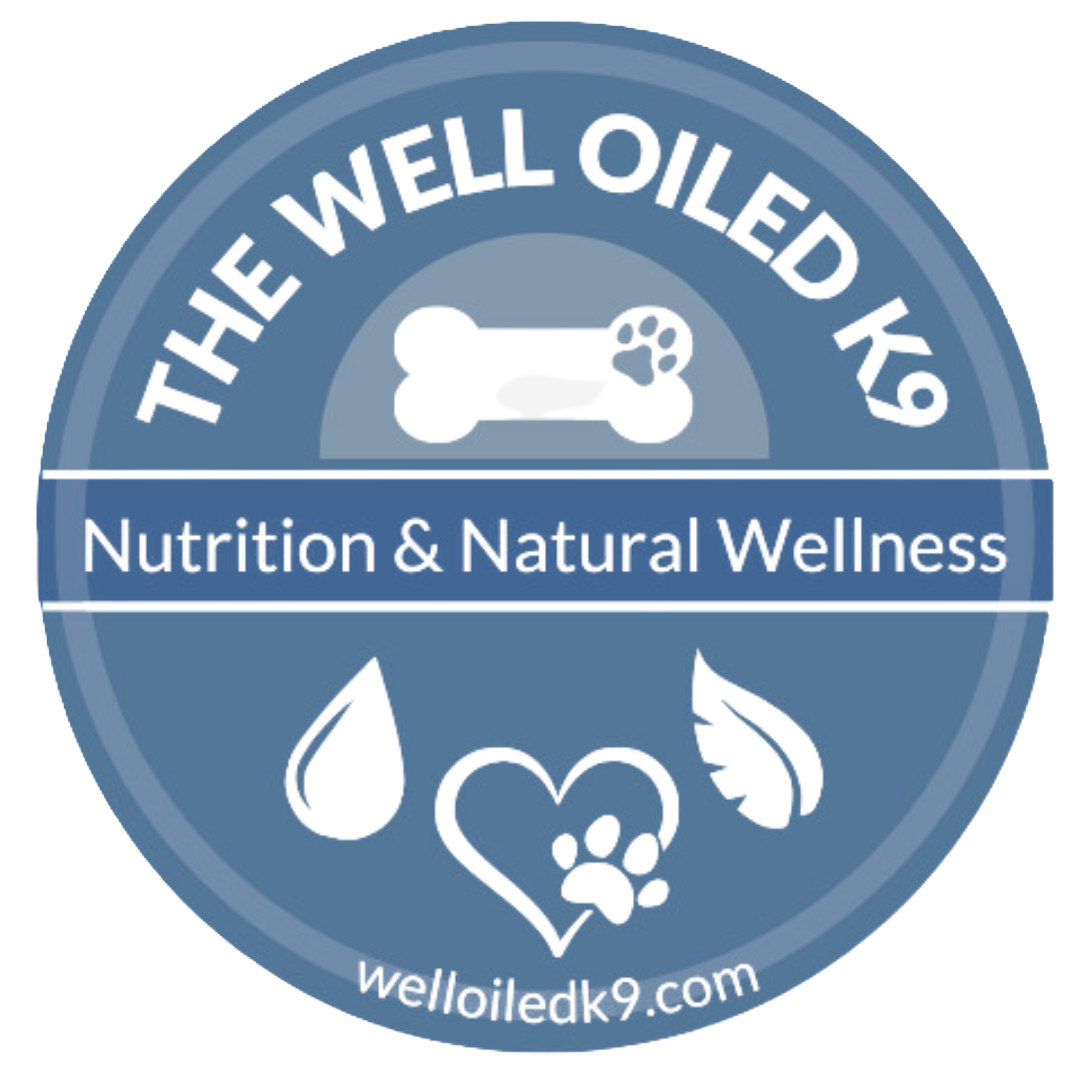Importance of Fats in Dog Food
Lots of people who begin making dog food at home forget the fats!
Many people wonder — does my dog need fat in his diet? He really does.
The older he gets he may need considerably more fat than he did as a younger dog. Fat is quite high in calories and maybe a way to get calories into your dog without him having to eat significantly more food. For some dogs where we are trying to get more fat into them without a lot of added volume — a pat of grass-fed butter, tallow or ghee is sometimes used!
The body needs fats for a healthy digestive system, skin, brain health, etc. Fats are essential for the Central Nervous System
When you begin to increase your dog’s fat intake — keep an eye on his weight.
Benefits of Healthy Raw Fat In Dog Food
Your dog needs raw fats in his diet for many important benefits.
Without fats, your dog cannot absorb Vitamin A, D, E, or K9. He also needs fats to receive Essential Fatty Acids (EFAs) that he can't produce on his out without the food sources that provide them. Fats contribute to the formation of bile acids that aid in digestion and nutrient absorption.
They are a concentrated energy source and significant calorie count
Fats produce metabolites that help control inflammation
Fats contribute to the formation of estrogen, testosterone, and progesterone.
They act as a mechanical barrier to insulate the body against heat loss, protecting internal organs & preventing water loss.
Fats And Pancreatitis
Right about now you are thinking — but fats lead to pancreatitis. Not exactly. Rendered fats, rancid fats, poor quality fats may contribute to pancreatic issues. But many people do not realize that sugars and carbohydrates can also cause pancreatic issues! The key is to start slow as you begin to introduce healthy fats to your dog’s diet.
Your dog will still need the essential fatty acids! And the Omega 3 essential fatty acids actually help you fight inflammation.
MCTs - Multi-Chain-Triglycerides found in Organic Coconut Oil do NOT require lipase (the digestive enzyme secreted by the pancreas to process fat), they’re passively absorbed through the GI tract.
Fats And Homemade Dog Food
If you begin making home-cooked meals — choosing skinless chicken is not going to be the best option. It is one of the most common mistakes home cooks make. We tend to think about feeding our dogs lean meat, in the same way, you want to eat lean meat. That’s not the right answer for most dogs.
Sources of Fat For Dog Food
Oily Fish
Grass Fed Butter, Ghee, Tallow
Nut Oils: Coconut Oil
Seed Oils — Flaxseed, Olive, Hemp, Grapeseed, Safflower, Avocado Oil
Fish Oils, Green Lipped Mussels, Calamari — however, I tend to track my Omega 3 oils separately from my fat oils.
How Much FAT Does My Dog Need
Most diets will have at least 20% fat in the diet but the average diet can be as high as 30%— but if we’re headed to a Keto diet for dogs, we might go as high as 70-80%. Obviously, you won’t make that jump quickly, but depending on the health needs of the dog and guidance from a nutritionist, it may be appropriate.
Hamburger — 80/20 is what’s recommended for most dogs with Volhard, with an occasional rotation (1 day a week) unless we have a specific health issue to work on. Most people don’t even consider hamburger in the home prepped meals! For some dogs we might consider 70/30 — I know my seniors get this in their rotation of proteins each month.
If you are feeding chicken, keep the skin on! But remember chicken is a common allergen and often not antibiotic free. It’s also a ” Hot / Warming ” protein according to Chinese medicine. So for some dogs, that protein source is going to add gas to the fire on them internally — which affects behavior (to the point of aggression), skin conditions, ability to learn, comfort, etc.
If you’re feeding turkey — you may have to find a source of fat to add to the diet since it’s so lean to start. But you also need to remember, if you have a performance dog, feeding turkey might make them feel like a big ol nap is needed after Thanksgiving lunch.
Calculating How Much Fat To Add
If you are aiming for 20% Fat and feeding 8oz of lean meat, 20% of 8 ounces is 1.6oz. So you would add approximately 1.6 oz of fat to 8oz of meat. Or 3.2 of fat per pound.
Fat and Weight Management
You'll need to monitor your individual dog for weight gain, metabolism, activity level, etc and adjust accordingly. Generally, you won't go below 10%
Fat and Diarrhea
If your dog is presenting with diarrhea on a higher fat diet, it could be that you’re increasing the fats too quickly. Reduce the fat amount in your recipe and let your dog stabilize, and then begin to increase gradually.
———————
You must read labels if you’re feeding kibble. We’re started to see a lot of plant based fat or nut fats, and not as much animal fat. That could be a problem, but good quality coconut oils can make a good contribution to your dog’s total fat intake.
A yucky tidbit of information for you — when cooking kibble,the animal fat is rendered out. And most manufacturers spray back on rendered fat after the kibble is processed to add flavor and fat back to the food. Some companies are using used restaurant grease — gross.
Note -- I didn't say your dog needs to BE fat! Leaner dogs tend to live longer and healthier.
